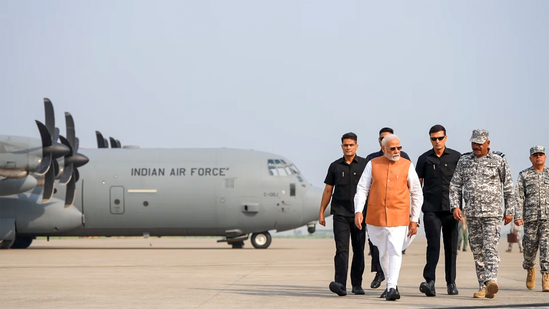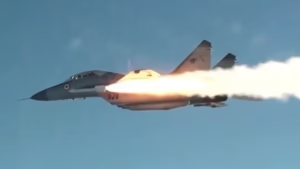India Jammed Chinese Air Defenses Used by Pakistan
IAF's Operation Sindoor Conducts Precision Strikes on Terror Camps in Pakistan, Demonstrating Advanced Military Capabilities


India Makes Precise Strike Against Pakistan After Operation Sindoor, Jamming Chinese-Supplied Air Defenses
In a major operation, the Indian Air Force (IAF) carried out a series of targeted attacks on terror camps and military installations in Pakistan and Pakistan-occupied Kashmir (PoK) between May 7-10, as part of Operation Sindoor. The government disclosed that during these raids, the IAF effectively jammed Pakistan’s Chinese-provided air defence (AD) systems, highlighting India’s technological superiority and strategic prowess.
The disclosure came hours after Prime Minister Narendra Modi-led Cabinet Committee on Security (CCS) met to discuss security in the western border region amid continuing tensions after a ceasefire agreement. The I&B ministry said that the IAF skipped and jammed Pakistan’s AD systems and the operation was accomplished within a 23-minute mission—a mission that involved bombarding nine terror camps on the basis of intelligence suggesting their involvement in terror operations.
The raids were conducted without Indian property loss, attesting to the success of India’s homegrown technology networks, intelligence, and strategy, such as guided ammunition and long-range unmanned aerial vehicles. The operation was a measured response to the April 22 Pahalgam terror attack in Kashmir that killed 26 civilians and was a firm response to cross-border terrorism.
The pre-dawn strike on May 7 attacked a minimum of 100 terrorists and included the destruction of terror facilities like terrorist training camps such as Markaz Subhanallah in Bahawalpur—Jaish-e-Mohammed headquarters—and Markaz Taiba near Muridke, which was linked to Lashkar-e-Taiba. The camps were tactically placed deep within Pakistan but were hit with precision-guided munitions, such as Scalp cruise missiles, BrahMos, and smart bombs.
At midnight on May 9-10, the IAF launched further strikes against 13 primary Pakistani military and airbase targets such as Rafiqui, Murid, Chaklala, and Sialkot, among others, one of the most extensive retaliatory efforts since the 1971 war. The strikes were aimed at runways, hangars, command posts, radar stations, missile launch sites, and weapon storages, using loitering munitions and guided bombs to have maximum effect.
India’s multi-layered air defence system, which includes assets like the S-400, Barak 8, Pechora, Spyder missiles, and enhanced guns, effectively neutralized Pakistani aerial threats during the operation. Authorities noted that India’s homegrown defence systems functioned with outstanding synergy, safeguarding both military and civilian infrastructure across the country.
The operation also witnessed the elimination of important terror camps utilized for training and recruitment purposes by terror groups based in Pakistan. Markedly, Markaz Subhanallah camp, about 100 km from the border, was a JeM training camp, whereas Markaz Taiba camp trained terrorists engaged in significant attacks, such as the 2008 Mumbai attacks.
Prime Minister Modi made it clear that India’s “Lakshman Rekha” against terrorism is now evident, stating that any future terror attacks would invite a firm response. The strikes have conveyed a powerful message to Pakistan that there is no sanctuary for terrorists, reaffirming India’s resolve towards national security.
This strike marks India’s change of military capability and strategic intention in fighting cross-border terrorism with the help of advanced home-bred technology and unflinching multi-force cooperation. The government’s firm action comes after years of rising tensions and marks a new normal for India’s border security and counter-terror policy.






